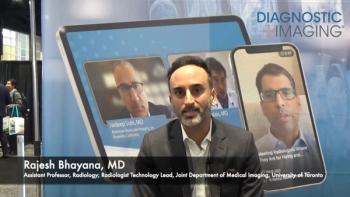
Even with Malpractice Reform, Docs are Still “Defensive”
Changes in malpractice standard legislation in three states had little effect on advanced imaging use in the emergency room.
Legislation changes in the malpractice standard for emergency physicians had little effect on the intensity of practice, according to a study published in
Investigating concerns regarding the provision of unnecessary care in order to reduce the risk of malpractice suits, researchers from the RAND Institute for Civil Justice, Santa Monica, and the University of California, Los Angeles, and Uniformed Services University of the Health Sciences, in Bethesda, MD, sought to evaluate the effect of legal reform on the treatment of Medicare patients in the emergency department. In 2003, Texas enacted legislation that changed the malpractice standard for emergency care to gross negligence. In 2005, Georgia and South Carolina did the same.
The researchers used a 5% random sample of Medicare fee-for-service beneficiaries and identified all emergency department visits to hospitals in the three reform states and in neighboring (control) states from 1997 through 2011. The control states included the five closest neighbors to each reform state, but excluded states with other important malpractice reform during the study period.
The study compared patient-level outcomes before and after legislation, after controlling for characteristics of patients, time-invariant hospital characteristics, and temporal trends. Outcomes were policy-attributable changes in the use of CT or MRI, per-visit emergency department charges, and the rate of hospital admissions.
The results showed that there was no policy-attributable reduction in the intensity of care for eight of the nine state-outcome combinations tested. There were no reductions in CT or MRI use or hospital admission in Texas, Georgia, or South Carolina, and no reduction in charges in Texas or South Carolina. However, reform was associated with a 3.6% reduction in per-visit emergency department charges in Georgia.
“Although there was a small reduction in charges in one of the three states (Georgia), our results in aggregate suggest that these strongly protective laws caused little (if any) change in practice intensity among physicians caring for Medicare patients in emergency departments,” the authors wrote.
“Overuse of advanced imaging is cited as a common defensive practice across many specialties,” they noted. “Our results challenge the validity of these assertions, or at least suggest that the use of emergency department imaging is unlikely to be affected by malpractice reform alone.”
Newsletter
Stay at the forefront of radiology with the Diagnostic Imaging newsletter, delivering the latest news, clinical insights, and imaging advancements for today’s radiologists.




























